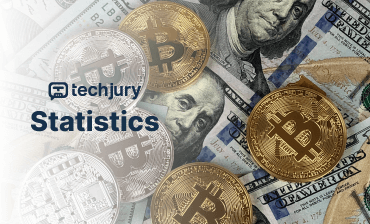Imagine standing at the precipice of a technological transformation so profound it could rewrite the fundamental rules of digital interaction. That‘s precisely where blockchain technology positions us today—not just as observers, but as active participants in a global digital revolution.
The Genesis of a Technological Paradigm
When Satoshi Nakamoto introduced Bitcoin in 2008, few could have predicted the seismic shift that would follow. What began as an experimental cryptocurrency protocol has evolved into a sophisticated technological ecosystem with the potential to fundamentally restructure how we conceive trust, transaction, and digital infrastructure.
Blockchain isn‘t merely a technology; it‘s a philosophical approach to decentralized systems. At its core, blockchain represents a distributed ledger technology that creates immutable, transparent records of transactions without requiring central authentication. This seemingly simple concept carries revolutionary implications across multiple sectors.
Understanding the Technological Mechanics
To truly appreciate blockchain‘s potential, we must first understand its intricate mechanics. Unlike traditional centralized systems where a single authority manages transactions, blockchain distributes computational power and verification across a network of computers. Each transaction becomes a "block" cryptographically linked to previous transactions, creating an unalterable chain of information.
The cryptographic security model ensures that once a transaction is recorded, it cannot be modified or deleted. This fundamental characteristic makes blockchain inherently resistant to manipulation, fraud, and unauthorized alterations—a game-changing proposition for industries plagued by trust and transparency challenges.
Global Market Dynamics: A Transformative Economic Landscape
Recent market research reveals blockchain‘s extraordinary growth trajectory. By 2024, the global blockchain market is projected to exceed [∧62.7 billion], representing a remarkable 69.3% compound annual growth rate. This isn‘t just incremental progress—it‘s a technological revolution gaining unprecedented momentum.
Sectoral Transformation Insights
Different industries are embracing blockchain with varying levels of enthusiasm and strategic implementation. Financial services lead the charge, with 77% of institutions exploring blockchain integration. Healthcare follows closely, with 55% of applications expected to deploy blockchain solutions by 2025.
The financial sector‘s blockchain adoption isn‘t merely experimental. Major institutions are fundamentally reimagining transaction infrastructure. By reducing transaction costs up to 50% and enabling near-instantaneous cross-border transfers, blockchain promises to democratize financial services in ways previously unimaginable.
Technological Innovation: Beyond Cryptocurrency
While cryptocurrencies initially captured public imagination, blockchain‘s true potential extends far beyond digital currencies. Emerging applications demonstrate the technology‘s versatility:
Supply Chain Revolution
Imagine tracking a product‘s entire journey from manufacturer to consumer with absolute transparency. Blockchain makes this possible by creating immutable, verifiable records at every stage of production and distribution. Companies like IBM and Walmart are already implementing blockchain to enhance supply chain visibility and reduce fraud.
Healthcare Transformation
Medical record management represents another frontier. Blockchain can create secure, patient-controlled health records that can be seamlessly shared between healthcare providers while maintaining stringent privacy standards. This could revolutionize medical research, treatment coordination, and patient data management.
For investors and technology strategists, blockchain represents a complex but potentially lucrative landscape. Decentralized Finance (DeFi) platforms alone are projected to reach [∧250 billion] by 2026, offering unprecedented opportunities for financial innovation.
Strategic Investment Considerations
- Evaluate technological maturity of blockchain projects
- Understand regulatory landscapes
- Assess team expertise and implementation strategy
- Consider long-term scalability potential
- Monitor emerging technological trends
Technological Challenges and Opportunities
No technological revolution arrives without challenges. Blockchain currently confronts several critical limitations:
Energy Consumption: Blockchain‘s computational requirements, particularly for proof-of-work systems like Bitcoin, consume significant electrical resources.
Scalability: Current blockchain architectures struggle with transaction speed and volume compared to traditional centralized systems.
Regulatory Uncertainty: Global regulatory frameworks remain fragmented and evolving.
These challenges, however, are not insurmountable. Emerging solutions like layer-2 scaling, energy-efficient consensus mechanisms, and collaborative regulatory approaches are actively addressing these limitations.
Future Projections: The Blockchain Horizon
By 2030, blockchain is anticipated to:
- Generate [∧3.1 trillion] in business value
- Transform 90% of enterprise technological infrastructure
- Create unprecedented digital trust mechanisms
- Democratize global economic participation
Practical Implementation Strategies
For organizations and individuals looking to engage with blockchain, consider these strategic recommendations:
- Continuous Learning: Invest in blockchain education and skill development
- Strategic Exploration: Identify industry-specific blockchain applications
- Adaptive Technology Planning: Develop flexible technological strategies
- Regulatory Awareness: Monitor evolving legal landscapes
- Cybersecurity Integration: Prioritize robust security frameworks
Conclusion: Embracing the Decentralized Future
Blockchain represents more than technological innovation—it‘s a fundamental reimagining of digital interaction. As we stand at this technological crossroads, the question isn‘t whether blockchain will transform our world, but how quickly and comprehensively that transformation will occur.
Are you ready to be part of this digital revolution?
